The Great State of Tennessee
by Mike Sparks
My family and I are very fortunate to call Tennessee home. From Mountain City to Memphis, the great state of Tennessee stretches across a tapestry of American culture and natural beauty that captures the heart of the South. From the Smokies to the Mississippi, this remarkable land encompasses everything from Appalachian hollers to Mississippi bottoms—creating three distinct Grand Divisions. Each are all very diverse—yet contribute to the state’s rich character. Tennessee is where the music never stops, flowing from Music City to Graceland, from bluegrass to blues, carrying the Grand Ole Opry tradition through every holler and valley. This is Dolly Parton’s homeland and Elvis country, where Rocky Top country meets Great Smoky Mountain magic, and where Tennessee hospitality welcomes visitors with sweet tea and front porch sittin’. The Tennessee Volunteer State spirit runs deep here. From the home of blues and country music to the Tennessee moonshine and mountain ways, this is a land where tradition and authenticity flow together like the rivers that carved its valleys, creating a place where Tennessee pride runs deep and the soul of America still sings.
“From Mountain City to Memphis, our state is blessed with natural beauty and rich natural resources,” said Gov. Lee. “Our resources will only be around for the future if we invest in them today. That’s why we’ve developed a conservation strategy that balances our state’s economic growth with a plan to protect our environment.” Governor Bill Lee of Tennessee
“Our resources will only be around for the future if we invest in them today. That’s why we’ve developed a conservation strategy that balances our state’s economic growth with a plan to protect our environment.” Governor Bill Lee of Tennessee
Overview of Tennessee State Parks System
Tennessee operates 56 state parks spanning approximately 185,000 acres from the Appalachian Mountains to the Mississippi River. These parks preserve Tennessee’s natural heritage while providing recreational opportunities for millions of visitors annually across the state’s three Grand Divisions.
East Tennessee Parks feature mountainous terrain and waterfalls, including Fall Creek Falls and Cummins Falls State Parks. **Middle Tennessee Parks** blend rolling hills and lake recreation, such as Burgess Falls and Old Stone Fort State Archaeological Park. **West Tennessee Parks** emphasize river recreation and unique geological features, including Reelfoot Lake and Paris Landing State Parks.
Park Categories
Tennessee’s parks include Resort Parks with full-service lodges and restaurants (Fall Creek Falls, Paris Landing), Recreation Parks focused on camping and outdoor activities, Natural and Historical Parks preserving significant sites, and Day-Use Parks** serving local communities with basic facilities.
Visitor Impact and Economic Benefits. Tennessee state parks attract approximately 34 million visitors annually, making the system one of the most visited in the Southeast. Peak visitation occurs during spring and fall, with steady year-round usage supporting local economies.
Economic Impact Analysis
Direct Economic Impact: Tennessee state parks employ thousands of workers across the state while generating revenue through camping fees, lodge accommodations, restaurants, and activity fees. Resort parks generate millions annually through hospitality operations.
Indirect and Induced Impact: Visitors spend money in surrounding communities on fuel, groceries, restaurants, and retail shopping. Gateway communities like Pikeville and Paris have built significant portions of their economies around state park tourism, creating a multiplier effect that supports additional jobs throughout Tennessee.
Tourism Integration: State parks serve as anchor attractions complementing Tennessee’s broader tourism industry, with many visitors combining park trips with Nashville’s music scene, Memphis attractions, or Great Smoky Mountains National Park.
Economic Impact Quantification
Tennessee state parks generate substantial economic returns:
– Direct spending by visitors exceeds $400 million annually
– Total economic impact reaches $800 million to $1.2 billion annually
– Employment impact supports 12,000 to 15,000 jobs statewide
– Tax revenue generates significant state and local benefits
Rural Economic Development
State parks serve as primary economic drivers in rural counties with limited industrial bases, providing year-round employment and attracting visitors to remote areas. Many rural communities have developed complementary businesses around parks, creating economic clusters that enhance visitor experiences while maintaining population stability and preserving natural resources.

Tennessee’s Top State Parks: A Traveler’s Guide
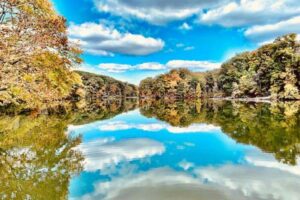 Tennessee’s diverse landscape offers some of the most spectacular state parks in the Southeast, each providing unique experiences that consistently earn rave reviews from visitors. From the rolling hills of Middle Tennessee to the dramatic bluffs along the Mississippi River, these natural treasures showcase the Volunteer State’s incredible outdoor heritage. Based on visitor feedback and travel reviews, here are Tennessee’s must-visit state parks that deliver unforgettable experiences.
Tennessee’s diverse landscape offers some of the most spectacular state parks in the Southeast, each providing unique experiences that consistently earn rave reviews from visitors. From the rolling hills of Middle Tennessee to the dramatic bluffs along the Mississippi River, these natural treasures showcase the Volunteer State’s incredible outdoor heritage. Based on visitor feedback and travel reviews, here are Tennessee’s must-visit state parks that deliver unforgettable experiences.
Fall Creek Falls State Park: The Crown Jewel
Located in the Cumberland Plateau region, Fall Creek Falls State Park consistently ranks as Tennessee’s most beloved state park among visitors. The park’s centerpiece, a stunning 256-foot waterfall, is the tallest waterfall east of the Mississippi River and draws photographers and nature enthusiasts from around the world.
Visitors frequently praise the park’s well-maintained trail system, which offers options for every skill level. The moderate 2-mile hike to the base of Fall Creek Falls provides spectacular
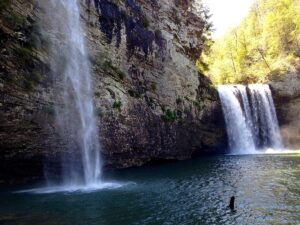







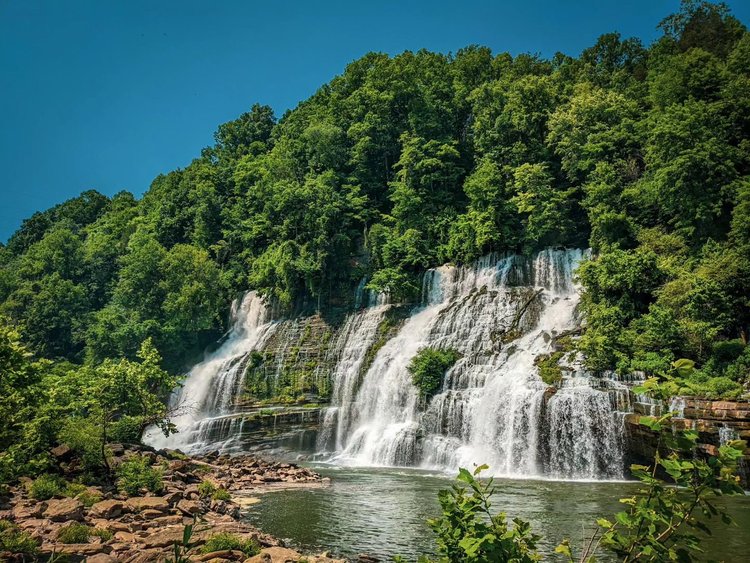
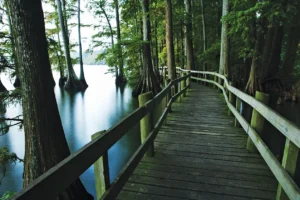 consistently rate Reelfoot Lake as exceptional for birdwatching, particularly during winter months when bald eagles congregate in impressive numbers. The park’s eagle tours, operating from December through March, receive outstanding reviews from visitors who describe close encounters with America’s national bird as truly magical experiences.
consistently rate Reelfoot Lake as exceptional for birdwatching, particularly during winter months when bald eagles congregate in impressive numbers. The park’s eagle tours, operating from December through March, receive outstanding reviews from visitors who describe close encounters with America’s national bird as truly magical experiences.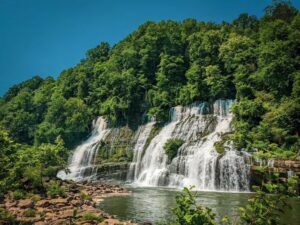 parks, Burgess Falls consistently surprises visitors with its spectacular natural beauty. The park features a series of four waterfalls along the Falling Water River, culminating in the impressive 136-foot Burgess Falls.
parks, Burgess Falls consistently surprises visitors with its spectacular natural beauty. The park features a series of four waterfalls along the Falling Water River, culminating in the impressive 136-foot Burgess Falls.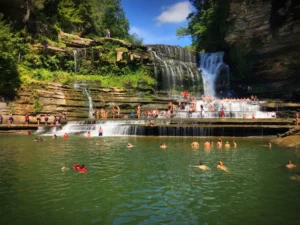 addition to Tennessee’s state park system has quickly gained a reputation among adventure enthusiasts. The park’s main attraction is a stunning 75-foot waterfall that cascades into a natural swimming hole, creating what many visitors describe as a slice of paradise.
addition to Tennessee’s state park system has quickly gained a reputation among adventure enthusiasts. The park’s main attraction is a stunning 75-foot waterfall that cascades into a natural swimming hole, creating what many visitors describe as a slice of paradise.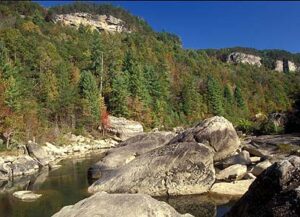 Fork offers some of the most dramatic scenery in the region. The park’s sandstone bluffs, natural arches, and pristine waterways create a landscape that consistently amazes visitors.
Fork offers some of the most dramatic scenery in the region. The park’s sandstone bluffs, natural arches, and pristine waterways create a landscape that consistently amazes visitors. , Paris Landing State Park offers a different but equally compelling outdoor experience. Water recreation takes center stage here, with visitors consistently praising the park’s marina facilities and lake access.
, Paris Landing State Park offers a different but equally compelling outdoor experience. Water recreation takes center stage here, with visitors consistently praising the park’s marina facilities and lake access.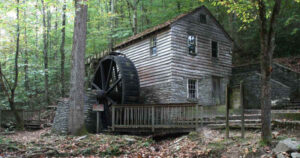 Authority dam. Visitors consistently appreciate the park’s unique blend of outdoor recreation and historical education.
Authority dam. Visitors consistently appreciate the park’s unique blend of outdoor recreation and historical education.





Leave feedback about this